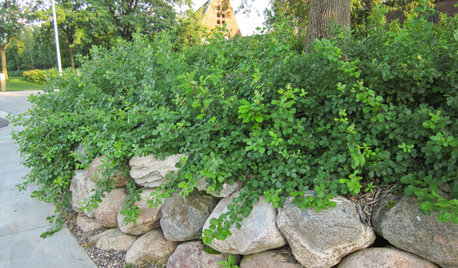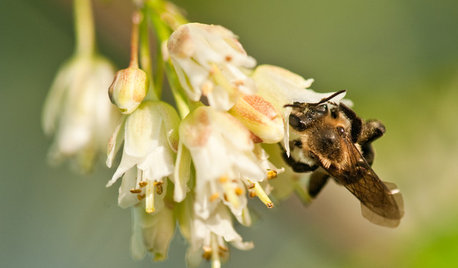[ Fair Use: For Educational / Research / Discussion Purposes Only ]
SEATTLE POST-INTELLIGENCER
http://seattlepi.nwsource.com/local/335572_transgenic16.html
Tuesday, October 16, 2007, 8:56/a PT, by Lisa Stiffler, Seattle Post-Intelligencer
Mutants or saviors? Rabbit genes create trees that eat poisons
UW scientists create transgenic poplars that neutralize toxins quickly
Super trees that suck up and destroy toxic chemicals from the air and water faster than regular trees are the latest creation by scientists at the University of Washington.
When the scientists stick a rabbit gene into poplar trees, the trees become dramatically better at eliminating a dozen kinds of pollutants commonly found on poisoned properties.
The trees could prevent the need for digging up tons of soil or pumping out millions of gallons of water for treatment and disposal. They naturally render a list of cancer-causing pollutants -- benzene, trichloroethylene (TCE), vinyl chloride, chloroform -- non-toxic.
But while the poplars could benefit cleanup projects, they raise a multitude of ecological and ethical concerns.
Many people are worried about transgenic organisms, in which a gene from one species is inserted into another, whether it's corn that produces a pig vaccine or a soybean that makes its own pesticide. There are concerns that mutant plants could spread, entering the food supply and threatening human health. Or they could interbreed with normal plants, transferring herbicide resistance to weeds, for example. No one can predict all of the potential side effects of a new gene on the host plant or other plants and animals.
When it comes to the pollution-consuming poplars, "it's really a question of trading some of the unknown risks of planting genetically modified trees with the positive environmental benefits," said Andrew Light, a UW professor of philosophy and public affairs. "This is a real dilemma for the environmental community."
In the UW project, a gene from a rabbit is added to the poplar's DNA. The gene contains the instructions for an enzyme that breaks down pollutants. A very similar enzyme naturally exists in the plant, but scientists have not been able to isolate the poplar's version in order to boost its production.
"It's a beautiful thing that a rabbit gene is perfectly readable by a plant. Look at how connected life is," said Sharon Doty, a professor with the UW's College of Forest Resources. She's the lead author of the poplar research published Monday in The Proceedings of the National Academy of Sciences.
"It's a beautiful thing," she said. "I don't think it's something to fear."
Others are not so smitten.
"It's commendable to be thinking about finding ways to reverse some of the pollution that has been caused in the past, but in doing so we have to make sure we don't cause new problems at the same time," said Doug Gurian-Sherman, a Washington, D.C.-based senior scientist with the Union of Concerned Scientists.
"There are a lot of unknowns here," he said.
Non-edible transgenic plants have captured little public attention -- with the notable exception of the attack on the UW's Center for Urban Horticulture six years ago. A group of eco-terrorists firebombed the center in an effort to sabotage research on genetically modified poplar trees by a researcher who is not part of Doty's study.
Doty said researchers remain worried about the threat of attack, but hope people understand the potential benefits of their work.
There are other experiments under way nationwide with trees and plants genetically modified to help with pollution cleanup -- cottonwoods with an unusual affinity for mercury, Indian mustard plants that soak up selenium.
The poplars created by the UW scientists are unique for being able to remove and destroy "several of the most widespread and dangerous pollutants." But that versatility also could prove problematic. Because the enzyme is unusually flexible and able to attack multiple chemicals, there's a greater likelihood that it might affect the trees and other organisms in unexpected ways.
There are still years of research ahead before the first of these poplars could be tested on an actual contaminated site. The results showing speedier destruction of toxics compared with normal trees -- TCE 53 times faster, benzene 10 times faster, chloroform nine times faster -- come from poplars only a few inches tall that are grown in solutions in the lab.
Tests growing the trees in soil have begun in a controlled setting. It could be five years or more before a field test could get started.
And the trees wouldn't work for every cleanup. Their roots grow 10 feet deep on average, depending in part on the soil type. Chemicals such as TCE are heavier than water and can sink.
The pollution "pretty quickly gets below the root zone of a tree," said Marcia Knadle, a hydrogeologist with the Environmental Protection Agency's Risk Evaluation Unit in Seattle.
Once planted outdoors, there are strategies for preventing the spread of the mutant poplars, according to the research led by Doty and the UW's Stuart Strand with contributions from 13 other university scientists. They could be cut down before they begin producing flowers at around 8 years of age. There are genes that could be added to the trees to make them less fertile, but that technology is not ready for use.
While the poplars aren't grown as crops and thus less threatening to people, the trees could become more widespread and can thrive without human care, Gurian-Sherman said. The mutant trees could put forest ecosystems at risk.
The poplars will require approval for use by the U.S. Department of Agriculture. Scientists working on the poplars said the USDA regulatory hurdles are too stringent; Gurian-Sherman said they're not protective enough to safeguard people and the environment.
Doty remains eager to see her trees sponging up waste at Superfund and other fouled sites. A breast cancer survivor who lost her father to pancreatic cancer, she's worried about the pollution in our air and water.
"Something is clearly wrong with our environment if children are dying of cancer," Doty said. "That's a lot of the motivation for me. I've got to do something about this."
Here is a link that might be useful: Mutants or saviors? Rabbit genes create trees that eat poisons
















cascadiansOriginal Author
pineresin
Related Discussions
DRAFT List of Safe Plants for Rabbits
Q
Poison Ivy
Q
Vole eaters
Q
WANTED: Flores Street House Eater rose cutting
Q
Iris GW
quirkyquercus
alexander3_gw
cascadiansOriginal Author
pineresin
pineresin
fatamorgana2121
john_w
Marie Tulin
alexander3_gw
alexander3_gw
alexander3_gw
Beeone
fatamorgana2121
pineresin
botann
cascadiansOriginal Author